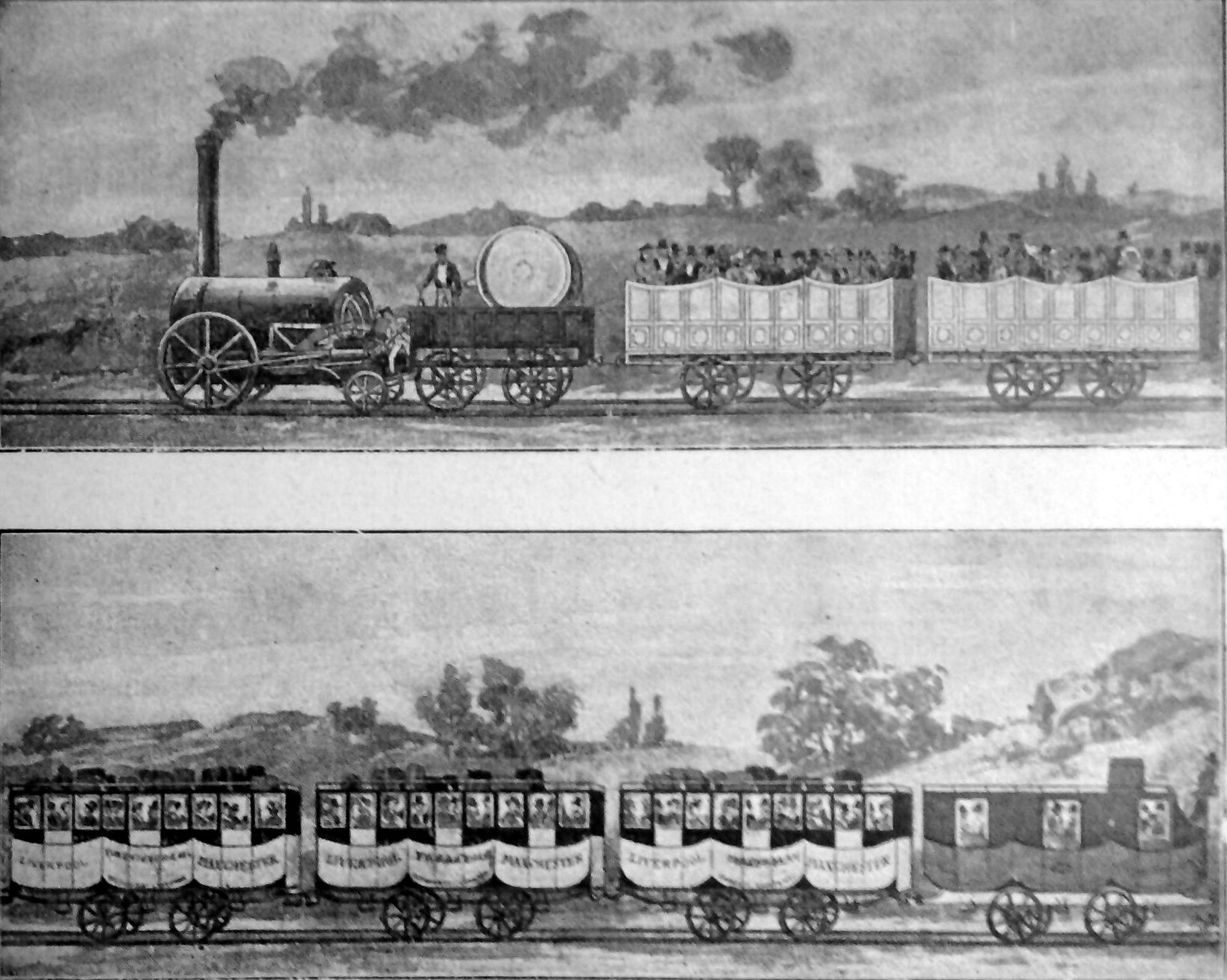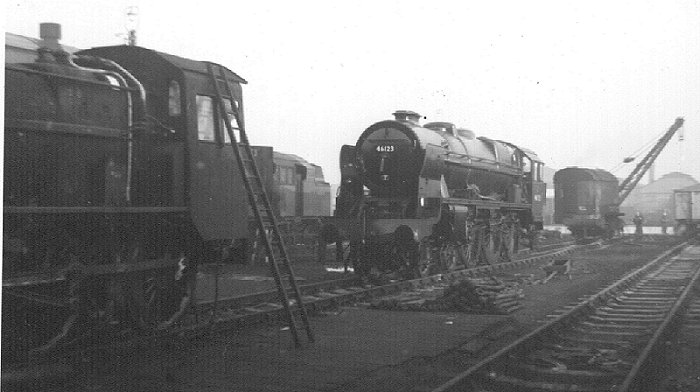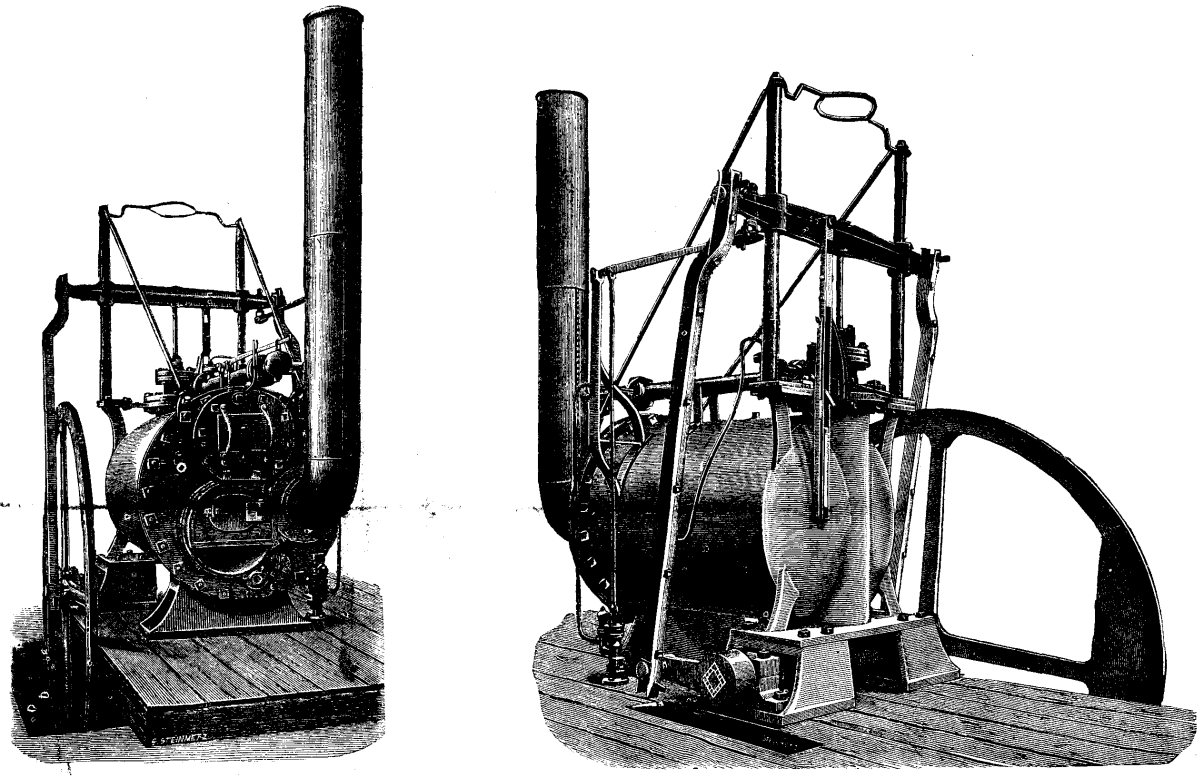|
Edge Hill Railway Works
Edge Hill railway works was built by the Liverpool and Manchester Railway around 1830 at Edge Hill, Liverpool. A second was built in 1839 by the Grand Junction Railway adjacent to it. Liverpool and Manchester Railway The shop initially maintained and repaired the company's existing fleet of thirty six engines, bought in from private makers, twenty seven from Robert Stephenson and Company. The first locomotive superintendent was John Dixon, followed by John Melling, then in 1840 by John Dewrance. In 1841 four 2-2-2 were built, followed by six more the following year, which also saw the production of 2-4-0 goods engines. By 1845 some twenty eight engines were built, at which time the L&MR was merged into the Grand Junction, and new building ceased, with the workshop closing in 1847. Grand Junction Railway Opening in 1839, the first Locomotive Superintendent was Thomas Melling. He was succeeded in 1840 by William Buddicom. An immediate problem was the frequency of broken crank a ... [...More Info...] [...Related Items...] OR: [Wikipedia] [Google] [Baidu] |
Liverpool And Manchester Railway
The Liverpool and Manchester Railway (L&MR) was the first inter-city railway in the world. It opened on 15 September 1830 between the Lancashire towns of Liverpool and Manchester in England. It was also the first railway to rely exclusively on locomotives driven by steam power, with no horse-drawn traffic permitted at any time; the first to be entirely double track throughout its length; the first to have a true signalling system; the first to be fully timetabled; and the first to carry mail. Trains were hauled by company steam locomotives between the two towns, though private wagons and carriages were allowed. Cable haulage of freight trains was down the steeply-graded Wapping Tunnel to Liverpool Docks from Edge Hill junction. The railway was primarily built to provide faster transport of raw materials, finished goods and passengers between the Port of Liverpool and the cotton mills and factories of Manchester and surrounding towns. Designed and built by George Stephen ... [...More Info...] [...Related Items...] OR: [Wikipedia] [Google] [Baidu] |
Alexander Allan (locomotive Engineer)
Alexander Allan was a Scottish mechanical engineer. He was born at Montrose, Angus, in 1809 and died at Scarborough, Yorkshire on 2 June 1891. Biography Alan was born in Montrose, Angus, Scotland in 1809. He undertook a apprenticeship to Mr. Gibb, a millwright. In 1832 aged about 23 he took a position at Robert Stephenson and Company, Newcastle upon Tyne. By 1834 he had moved to Liverpool and taken up a position with George Forrester and Company who were about to begin building railway locomotives. Allan was works manager for George Forrester and Company until 1840. He was the engineer sent for a year to supervise the maintenance of the three Forrester engines ''Vauxhall'', ''Dublin'' and ''Kingstown'' for the first year of their service at Dublin and Kingstown Railway in 1834. From 1843 to 1853 he was Works Manager at the Crewe Works of the Grand Junction Railway, later London and North Western Railway, under Francis Trevithick. He later claimed the credit for designin ... [...More Info...] [...Related Items...] OR: [Wikipedia] [Google] [Baidu] |
History Of Liverpool
The history of Liverpool can be traced back to 1190 when the place was known as 'Liuerpul', possibly meaning a pool or creek with muddy water, though other origins of the name have been suggested. The borough was founded by royal charter in 1207 by King John, made up of only seven streets in the shape of the letter 'H'. Liverpool remained a small settlement until its trade with Ireland and coastal parts of England and Wales was overtaken by trade with Africa and the West Indies, which included the slave trade. The world's first commercial wet dock was opened in 1715 and Liverpool's expansion to become a major city continued over the next two centuries. By the start of the nineteenth century, a large volume of trade was passing through Liverpool. In 1830, the Liverpool and Manchester Railway was opened. The population grew rapidly, especially with Irish migrants; by 1851, one quarter of the city's population was Irish-born. As growth continued, the city became known as "the second ... [...More Info...] [...Related Items...] OR: [Wikipedia] [Google] [Baidu] |
Edge Hill Railway Station
Edge Hill railway station is a railway station that serves the district of Edge Hill, Liverpool, England and is one of the oldest railway stations in the world There have been two stations of that name. The first stood a short distance south-west of the present station and its remains are still visible, although the site is not open to the public. Edge Hill is the first station after departure from . The station, and all trains serving it, are operated by Northern Trains. Avanti West Coast, East Midlands Railway, TransPennine Express and West Midlands Trains services pass through the station, although, they are non stop. Early history The first station opened on 15 September 1830 as part of the Liverpool and Manchester Railway. It was located in a wide by long, deep sandstone cutting, with three tunnels at the west end. The largest bore, in the centre, was the Wapping Tunnel, a long downwards incline leading to Wapping Dock and the world's first tunnel to be bored un ... [...More Info...] [...Related Items...] OR: [Wikipedia] [Google] [Baidu] |
Longsight
Longsight is an inner city suburb of Manchester, England, located south of the city centre. It is bounded by Ardwick and West Gorton to the north; Levenshulme to the south; and Chorlton-on-Medlock, Victoria Park and Fallowfield to the west. Historically in Lancashire, it had a population of 15,429 at the 2011 census. History An ethnically diverse area, for many years, Longsight has been plagued by gang related violence, similar to that of nearby Moss Side. Most of the violence came from tensions between two rival gangs which fought "turf wars" with each other since the 1990s, resulting in many shootings and several deaths. The Gooch Gang, from neighbouring Moss Side, were jailed in 2009, Consequently, gun crime in Greater Manchester as a whole has fallen dramatically, from a high of 120 gang-related shootings in 2006 to just 16 in 2011. Governance Longsight has been in the parliamentary constituency of Manchester Gorton since boundary changes in 1983. The seat has been r ... [...More Info...] [...Related Items...] OR: [Wikipedia] [Google] [Baidu] |
Crewe Railway Works
Crewe Works is a British railway engineering facility located in the town of Crewe, Cheshire. The works, which was originally opened by the Grand Junction Railway in 1840, employed around 7,000 to 8,000 workers at its peak. In the 1980s, a lot of the engineering works were closed. Much of the site has been redeveloped but the remaining parts are owned and operated by French-owned multinational rolling stock manufacturer, Alstom SA. During the late 19th century, the London and North Western Railway used Crewe Works to produce many famous locomotives such as the Webb Jumbo class and the compounds, the Whale Experiment and Precursor classes, and the Bowen-Cooke Claughtons. In particular, Whale's 1912 superheated G1 Class developed from a locomotive introduced by Webb in 1892, lasted, in many cases until 1964, near the end of steam in 1968. After grouping, the works were taken over by London, Midland and Scottish Railway which was the successor to the LNWR. It was duri ... [...More Info...] [...Related Items...] OR: [Wikipedia] [Google] [Baidu] |
Richard Trevithick
Richard Trevithick (13 April 1771 – 22 April 1833) was a British inventor and mining engineer. The son of a mining captain, and born in the mining heartland of Cornwall, Trevithick was immersed in mining and engineering from an early age. He was an early pioneer of steam-powered road and rail transport, and his most significant contributions were the development of the first high-pressure steam engine and the first working railway steam locomotive. The world's first locomotive-hauled railway journey took place on 21 February 1804, when Trevithick's unnamed steam locomotive hauled a train along the tramway of the Penydarren Ironworks, in Merthyr Tydfil, Wales. Turning his interests abroad Trevithick also worked as a mining consultant in Peru and later explored parts of Costa Rica. Throughout his professional career he went through many ups and downs and at one point faced financial ruin, also suffering from the strong rivalry of many mining and steam engineers of the day. Durin ... [...More Info...] [...Related Items...] OR: [Wikipedia] [Google] [Baidu] |
Francis Trevithick
Francis Trevithick (1812–1877), from Camborne, Cornwall, was one of the first locomotive engineers of the London and North Western Railway (LNWR). Life Born in 1812 as the son of Richard Trevithick, he began the study of civil engineering around 1832, and by 1840 was employed by the Grand Junction Railway (GJR). After leaving the LNWR he returned to Cornwall and became factor of the Trehidy estates, of which his grandfather had been mineral agent in the 18th century. He wrote a biography of his father and, in 1872, had it published. He died at Penzance on 27 October 1877 and was buried there. His son, Arthur Reginald Trevithick (1858-1939), worked for many years on the LNWR, including several years as assistant locomotive works manager at Crewe. Another son, Frederick Harvey Trevithick (1852-1931), worked for both the Great Western Railway and the Egyptian State Railways and at the latter advanced to Chief Mechanical Engineer. Another son, Richard Francis Trevithick (1845-1 ... [...More Info...] [...Related Items...] OR: [Wikipedia] [Google] [Baidu] |
2-4-0
Under the Whyte notation for the classification of steam locomotives, represents the wheel arrangement of two leading wheels on one axle, four powered and coupled driving wheels on two axles and no trailing wheels. The notation 2-4-0T indicates a tank locomotive of this wheel arrangement, on which its water and fuel is carried on board the engine itself, rather than in an attached tender. Overview The 2-4-0 configuration was developed in the United Kingdom in the late 1830s or early 1840s as an enlargement of the 2-2-0 and 2-2-2 types, with the additional pair of coupled wheels giving better adhesion. The type was initially designed for freight haulage. One of the earliest examples was the broad-gauge GWR Leo Class, designed by Daniel Gooch and built during 1841 and 1842 by R. & W. Hawthorn, Leslie and Company; Fenton, Murray and Jackson; and Rothwell, Hick and Rothwell. Because of its popularity for a period with English railways, noted railway author C. Hamilton Ellis ... [...More Info...] [...Related Items...] OR: [Wikipedia] [Google] [Baidu] |
Edge Hill, Liverpool
Edge Hill is a district of Liverpool, England England is a country that is part of the United Kingdom. It shares land borders with Wales to its west and Scotland to its north. The Irish Sea lies northwest and the Celtic Sea to the southwest. It is separated from continental Europe b ..., south east of the Liverpool City Centre, city centre, bordered by Kensington, Liverpool, Kensington, Wavertree and Toxteth. Edge Hill University was founded here, but moved to Ormskirk in the 1930s. History The area was first developed in the late 18th-early 19th century Georgian era. Many of the Georgian architecture, Georgian houses of the time still survive. Edge Hill was designated a Conservation Area in 1979. Most of the Georgian property around St. Mary's Church is now English Heritage listed. The later terraces, of the Victorian era, have also largely been demolished. Although some modern housing has been built, the area still has a depopulated appearance, with many vacant l ... [...More Info...] [...Related Items...] OR: [Wikipedia] [Google] [Baidu] |
2-2-2
Under the Whyte notation for the classification of steam locomotives, 2-2-2 represents the wheel arrangement of two leading wheels on one axle, two powered driving wheels on one axle, and two trailing wheels on one axle. The wheel arrangement both provided more stability and enabled a larger firebox than the earlier 0-2-2 and 2-2-0 types. This configuration was introduced in 1834 on Robert Stephenson's ' Patentee locomotive' but it was later popularly named Jenny Lind, after the Jenny Lind locomotive which in turn was named after the popular singer. They were also sometimes described as Singles, although this name could be used to describe any kind of locomotive with a single pair of driving wheels. Equivalent classifications Other equivalent classifications are: *UIC classification: 1A1 (also known as German classification and Italian classification) *French classification: 111 *Turkish classification: 13 *Swiss classification: 1/3 History The 2-2-2 configuration appears to ha ... [...More Info...] [...Related Items...] OR: [Wikipedia] [Google] [Baidu] |
John Dewrance (locomotive Engineer)
Dewrance & Co. Ltd was a manufacturer of engine and boiler accessories, such as pumps and gauges. History It was established in London in 1835 as a partnership by Joseph Woods (engineer), Joseph Woods, with John Dewrance. It was involved in the building of the locomotive LMR 57 Lion, ''Lion'' in 1838 for the Liverpool and Manchester Railway. In 1844 after Wood's death the firm became a company specialising in manufacturing engine and boiler accessories. It produced a brass pressure gauge for Lloyd's Register of shipping to pressure-test ships' boilers before insuring them. Such gauges have become collectable. A pair are on display at the Internal Fire – Museum of Power. Dewrance died in 1861 and left the business to his son. The firm's introduction of the groove-packed plug cock in 1875 was a major innovation because it made steam safety valves easier to operate. Sir John Dewrance, who was married to the granddaughter of Richard Trevithick took over the business in 1879. ... [...More Info...] [...Related Items...] OR: [Wikipedia] [Google] [Baidu] |




_2018.png)



